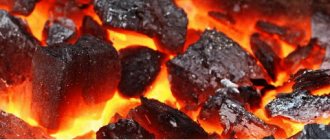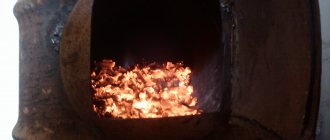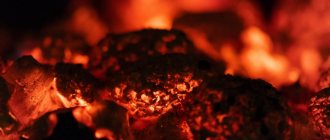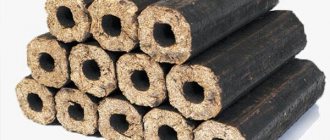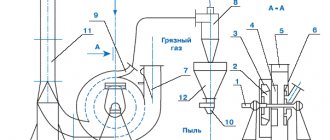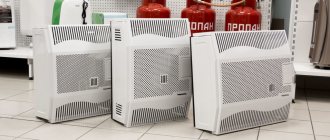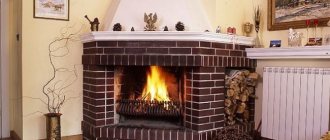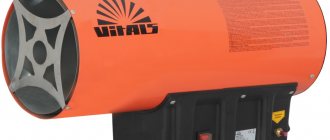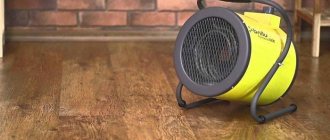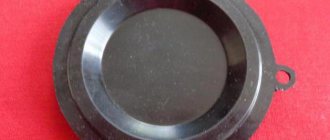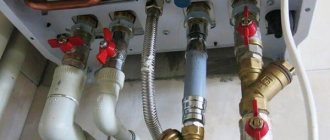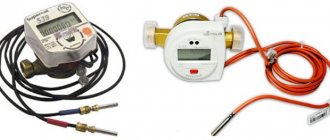As a rule, those who install autonomous boiler equipment in their home for the first time encounter problems with its operation. Not everyone, for example, knows how to properly heat a boiler with coal or what type of solid fuel to choose for the designated purposes. Experts point out that any stove must be handled with extreme caution, carefully observing all fire safety standards. It is also useful to familiarize yourself with the operating features of the selected equipment in advance.
How does a coal boiler work?
What is a coal boiler? This is a simple installation that consists of two compartments. Coal is placed in the upper firebox. After it burns out, ash and slag remain, which fall into the lower compartment and are removed from there as necessary. Between the chambers there is a regular grate made of durable cast iron.
Such furnaces can be additionally equipped with sophisticated automation, which allows the unit to switch to offline mode and control the draft. If there is no automation, coal stoves operate using natural circulation. The first type of device has several operational advantages, but long-burning stoves cost much more than simple devices.
Automation works extremely simply. Thanks to it and the operation of the fan, it is easy to control the flow of oxygen into the firebox. The more it is, the hotter the coal burns, and the faster the fuel burns, giving off the maximum amount of heat. Restricting oxygen access leads to the opposite effect. The fuel burns more slowly, the amount of heat released decreases, but the burning time of the coal increases.
The heating temperature is regulated by a special temperature sensor. The boiler operating modes can be programmed. If the set temperature is reached, the sensor is triggered and turns off the fan. At the same time, the oxygen supply decreases and the furnace burns out more slowly. When the temperature drops, the fan turns on and begins to intensively pump oxygen into the firebox. The coal is actively burning again. If you take into account such features of the operation of a solid fuel boiler, it becomes clear when and how to put coal in the stove.
Ignition temperature and other parameters
The process of coal combustion is a chemical reaction of carbon oxidation that occurs at a high initial temperature with intense heat release. Now it’s simpler: coal fuel cannot ignite like paper; ignition requires preheating to 370-700 ° C, depending on the type of fuel.
Key moment. The efficiency of coal combustion in a stove or household solid fuel boiler is characterized not by the maximum temperature, but by the completeness of combustion. Each carbon molecule combines with two oxygen particles in the air to form carbon dioxide CO2. The process is reflected in the chemical formula.
If you limit the amount of incoming oxygen (cover the ashpit, switch the TT boiler to smoldering mode), instead of CO2, flammable carbon dioxide CO is formed, which is emitted into the chimney, and the combustion efficiency will significantly decrease. To achieve high efficiency, you need to provide favorable conditions:
- Brown coals ignite at a temperature of +370 °C, hard coals - 470 °C, anthracite - 700 degrees. Pre-heating of the heating unit using firewood (sawdust briquettes) is required.
- Air is supplied to the firebox in excess, the safety factor is 1.3-1.5.
- Combustion is maintained by the high temperature of the hot layer of coals lying on the grate. It is important to ensure the passage of oxygen through the entire thickness of the fuel, since air moves through the ash pan due to natural chimney draft.
Comment. The exceptions are homemade stoves of the “Bubafonya” type and cylindrical top-burning boilers, where air is supplied to the firebox from top to bottom.
The theoretical combustion temperature and specific heat transfer of various types of fuel are shown in the comparison table. It is noticeable that under ideal conditions any fuel will release maximum heat when interacting with the required volume of air.
In practice, it is unrealistic to create such conditions, so air is supplied with some excess. The actual combustion temperature of brown coals in a conventional TT boiler lies in the range of 700...800 °C, of rocks and anthracites - 800...1100 degrees.
If you overdo it with the amount of oxygen, energy will begin to be spent on heating the air and simply fly out into the chimney, the efficiency of the furnace will noticeably drop. Moreover, the fire temperature can reach 1500 °C. The process resembles a regular fire - the flame is large, there is little heat. An example of efficient combustion of coal with a retort burner on an automatic boiler is presented in the video:
What coal to choose for the fire?
What is coal? This is a product of plant origin, which contains carbons and non-flammable impurities. It is they who form ash and slag-like substances after burning. The ratio of the two components is different everywhere. It is this, as well as the “age” of natural fuel, that determines the grade of coal. Experts distinguish several varieties.
The “youngest” type of coal is lingite. It has a rather loose structure. If you pick up a lump of lingite, it will quickly crumble and lose its shape. This type of coal is most often used in thermal power plants, but lingite is not suitable for heating a home.
In addition to lingite, brown coal, hard coal, and anthracite are also mined - the most ancient carbon deposits. All varieties have different humidity levels. In brown coal, for example, humidity is 50%; in anthracite its threshold does not exceed 7%. Therefore, anthracite has the highest specific heat. Its indicators are 9 thousand kcal/kg. Coal has a lower figure - 5.5 kcal/kg. The brown variety has a specific heat of only 3 kcal/kg. Considering all this, it is easy to understand what type of fuel to purchase for heating the house.
How to use solid fuel units correctly?
The operating principle of a solid fuel boiler is known, and the issue of choosing the type of coal has been resolved. All that remains is to learn how to properly light the stove. There are several simple rules that everyone who chooses the described installations for organizing heating of a country house must learn.
Remember! First, the stove must be prepared for lighting, then fuel must be correctly loaded into it. During its combustion, the installation must be closely monitored, removing combustion products in a timely manner.
Let's look at all these points in more detail.
Preparing the stove for lighting
If the stove in a country house is used occasionally, before starting its operation, for safety reasons, it is necessary to exclude the presence of cracks inside the masonry.
Why are they dangerous? Through them, combustion products and carbon monoxide can enter the room, which must be removed outside using drafts. If such a defect is discovered, it must be eliminated before kindling by covering the cracks with a mixture of clay and sand. Otherwise, when heated, the cracks may increase in size even more. And this will lead to dangerous situations.
When inspecting the stove from the outside, we remove flammable objects away from it and clean it inside. We remove the ash and slag with a shovel, freeing the internal compartment. It is advisable to wipe the inner walls of the firebox with a dry cloth. If this is not done, then during kindling the dust will begin to burn, filling the room with an unpleasant odor.
The coal stove needs to be lit several times a day. The duration of one fire should not exceed two hours. For loading, it is better to use well-dried medium-fraction coal.
Note! Wet fuel produces steam when burned. It forms condensation, which settles inside the chimney. Mixing with soot, condensate forms coke, which gradually clogs the chimney passage, narrowing it. And this leads to problems with traction.
Do not use household waste or flammable liquids such as gasoline or kerosene to ignite coal. Do not leave the stove unattended while it is burning. This rule must be observed especially strictly if there are small children or animals in the house.
How to properly melt coal?
The stove must be lit as follows:
- First, we place sheets of newspaper or any other dry paper on the bottom of the firebox. On top of it we place a layer of small wood chips. And on them we stack small firewood, for example, birch logs. To make them burn faster, they need to be folded in the form of a well or a small hut.
- Set fire to the paper. We close the oven door and open the ash pan. Using it, it is easy to control the intensity of fuel combustion. The stronger the air flow, the faster the stack of firewood burns out.
- After the firewood has completely burned out and only a pile of smoldering ash remains, you need to lay a 15-centimeter layer of fine coal directly on it.
Note! When opening the door to load fuel, be sure to close the vent.
- When the 15-centimeter layer of coal burns out well, we place larger coal directly on it and build a cushion 60 cm high. It is useful to stir the burnt fuel thoroughly beforehand, which will improve air circulation and prevent caking of the coal mass. Coal can be placed by opening the firebox door.
Note! Low-quality solid fuel tends to coke. Therefore, experienced stove makers advise laying a layer of coal with layers of firewood. Such a multi-layer cake will allow the unit to burn well and give off the maximum amount of heat.
- To properly light the stove, it is better to do this - open the ash pan and let the paper with the wood chips burn out using natural circulation. This will allow the chimney to warm up well. As the fuel burns, the draft will increase, so you then need to close the ash pan and turn on the fan.
How to store coal
When purchasing a large amount of fuel at once, you need to know how to store it. If you follow storage rules, coal will not lose its original properties.
Shelf life
It is beneficial to purchase solid fuel in large quantities at once. But, like any other combustible material, coal has a shelf life that depends on the deposit and brand.
It is interesting that coal can remain in the bowels of the earth for millions of years without losing its quality. However, once mined, it immediately begins to interact with the environment. The most dangerous thing for it is a meeting with oxygen - that is, oxidation. It destroys the structure of the raw material and renders it unusable.
The larger the coal pieces, the longer it will take to oxidize. For example, coal with a fraction above 100 mm can be stored without loss of quality characteristics for up to 3 years, with pieces with a size of up to 100 mm - about 1 year, and fuel with a fine fraction - less than 24 months. The 20-40 mm fraction, which you can purchase from our company, retains its quality for one season. That is, it makes no sense to store such coal for several winters.
Premises requirements
The ideal storage location is dark, covered and well ventilated. The material can be packaged in bags or wooden boxes. Coal can be placed in the yard. To do this, use a platform into which coal is poured and compacted to reduce the air gap. To extend shelf life, it is advisable to cover the fuel with a lid or polyethylene.
Let's look at a specific example. For the heating season we need 3.5 tons of coal (about 4.5 cubic meters). This means you need a room of 4 m2 and another area for passage. It is advisable that the premises have a reserve area (at least 5% of the area). It will be needed to refresh coal during long-term storage and cooling if it is hot.
It is best if the coal storage room is next to the boiler room. This way you won't have to carry heavy buckets over long distances. It must be equipped with drainage structures to drain melt, rain and groundwater.
The warehouse cannot be equipped with various communications - gas pipelines, heat sources, electrical lines. In addition, it should not be located where underground communications pass - electrical cables, pipelines, and so on.
You should always remember that coal can ignite. That is why this factor must be taken into account during storage. You need to place the fuel, compacting the small pieces well. After all, spontaneous combustion, which occurs due to the penetration of air into the layers of coal, can cause a fire. Spontaneous combustion can occur in places where different types of fuel or different grades of coal come into contact. Also, fresh coal should not be unloaded onto a site that is poorly cleared of old fuel residues.
Storing coal indoors or under a canopy helps preserve the quality characteristics of the fuel for a longer period. But it is not always possible to store it in closed conditions.
Outdoor coal storage
It is best if you find a dry and dark place to store the fuel. This could be a barn, shed or other outbuildings. You can purchase a special bunker - a metal box with a closing hatch. Canvas bags are also suitable (it will be more convenient to transport coal to the boiler in them).
It’s not scary if the coal is stored in the open air. As for precipitation, it is not harmful to fuel. But in order for coal not to lose its properties, you need to follow several recommendations for storing the material.
So, if you are forced to store coal outside:
- Choose a flat, debris-free area for the material. It must be located in a non-flooded, somewhat elevated place (so that during spring floods or rainy times the water does not wet the coal from below). The soil under the material must be dry or frozen.
- It is desirable that the base under the coal be solid. You can lay it out with bricks, tiles, and finally lay down boards or lay wooden pallets.
- When choosing a site, make sure that there are no open sources of fire nearby or expected. Also make sure that there is no equipment that operates at high temperatures (for example, welding) near the coal.
- Before adding material to the site, place a tarp underneath it. This way the coal will be dry, without snow and leaves.
- Periodically pour and stir the material (especially during frosts). This is necessary to ensure that the coal does not freeze in the open air.
As you can see, this material is quite demanding in terms of storage conditions. However, this is compensated by its high efficiency.
Choosing coal as a fuel and a boiler for it
Here is a selection of materials:
Everything you need to know about heating and climate control Features of the selection and maintenance of boilers and burners. Comparison of fuels (gas, diesel, oil, coal, wood, electricity). Do-it-yourself ovens. Coolant, radiators, pipes, heated floors, circulation pumps. Chimney cleaning. Conditioning
An analysis of the cost of heating showed that the cheapest option is heating with coal. I don't have gas, so this alternative is not considered. Other heating options are much more expensive.
Operating a coal boiler requires regular addition of coal to it. This should be done 2 – 3 times a day. It's not a problem. I add it in the morning, before leaving and in the evening, after arriving, and add a little before bed. Coal, unlike firewood, can burn slowly and gradually in a boiler for 12 hours.
For heating, the BOSCH 2000 BK 16-1 S61 boiler was chosen based on its low cost, well-known brand and dimensions that meet my requirements. The fact is that the boiler had to take the place of the stove - the potbelly stove. And the space there is very limited.
DPK coal was chosen as fuel. This fuel is ideal for the specified boiler. On the one hand, such coal burns well in this boiler, on the other, it has sufficient calorific value to provide my house with heat.
Coal or wood?
A thoughtful choice of fuel will help maintain combustion over a long period of time. Coal has a significant advantage over wood here.
However, for the theory to work in practice, remember: your boiler must have a large firebox. Otherwise, the system simply may not have enough resources. And with good fuel you will not be able to achieve the desired effect.
Calculation method
- Find out the power of the boiler (take the manufacturer’s data from the equipment passport, taking into account the efficiency).
- Take into account the volume of the chamber and the actual volume of fuel loading. Here you need to take into account both the passport data and the actual volume of fuel. When using firewood, it can, for example, be significantly reduced due to the characteristics of the installation. Due to the gaps between the firewood, the stacking coefficient reaches 0.35-0.5.
- Now you can move on to the calculations.
Let's say you have a boiler with a power of 12 kW and efficiency = 70%. The volume of its chamber is 33 liters. The firebox will be produced with wood with a density of 650 kg per 1 cubic meter.
With a volume of 0.033 cubic meters, the theoretical capacity of the firebox is 21 wood logs (650 x 0.033), practical – 8 (21 x 0.4)
It remains to calculate the calorific value of the bookmark. To do this, the amount of firewood should be multiplied by the calorie content (8x4200 kcal = 33600 kcal). This corresponds to 39 kW. This number must be multiplied by the efficiency of the equipment (39x0.7 = 27 kW), and the resulting result divided by the power. A simple calculation shows: the real burning time of your long-burning boiler is 2.25 hours.
Possible reasons for restricting access:
Access is limited by court decision or on other grounds established by the legislation of the Russian Federation.
A network address that allows you to identify a site on the Internet is included in the Unified Register of domain names, page indexes of Internet sites and network addresses that allow you to identify sites on the Internet containing information the distribution of which is prohibited in the Russian Federation.
A network address that allows you to identify a site on the Internet is included in the Register of domain names, indexes of pages of sites on the Internet and network addresses that allow you to identify sites on the Internet containing information distributed in violation of exclusive rights.
